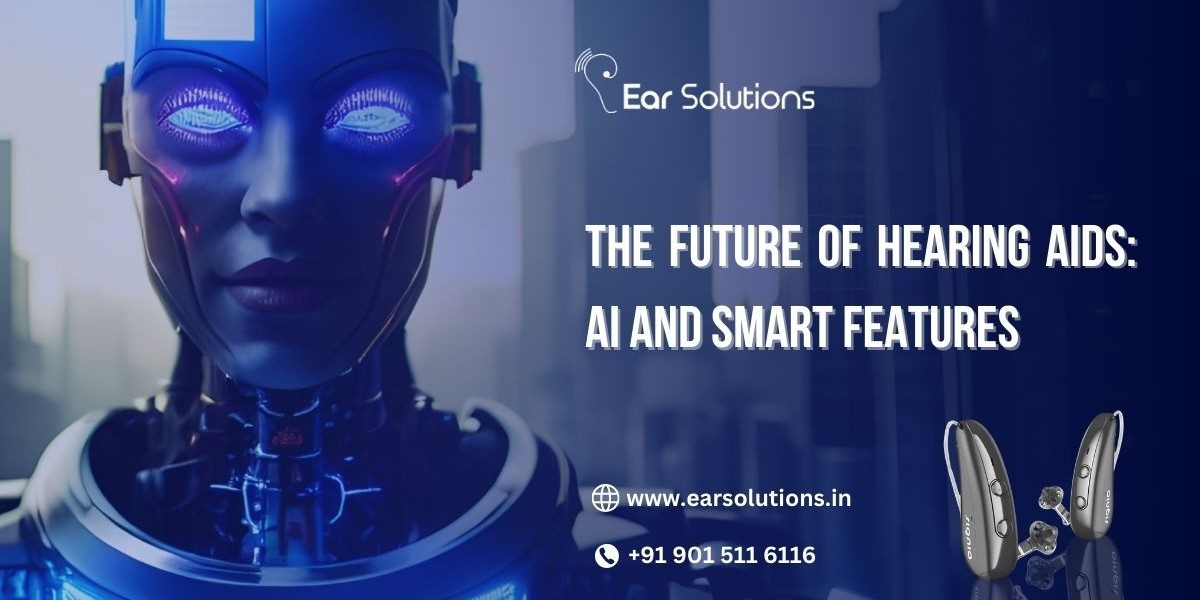Hearing aid technology has come a long way, from bulky analog devices to sleek digital solutions with advanced features. The future of hearing aids is now being shaped by artificial intelligence (AI) and smart technology, offering users a more personalized and seamless hearing experience. AI-driven hearing aids enhance sound clarity, reduce background noise, and adapt to various listening environments in real time. As we move into 2025 and beyond, these smart features are set to revolutionize how people with hearing loss interact with the world around them.
AI-Powered Sound Processing
One of the biggest advancements in modern hearing aids is AI-powered sound processing. Unlike traditional hearing aids that amplify all sounds equally, AI-enabled devices use machine learning algorithms to differentiate speech from noise. This helps users focus on conversations while reducing distractions from background noise. AI can also adjust sound settings automatically based on the user’s environment, providing a seamless listening experience without the need for manual adjustments.
Smart Noise Cancellation and Directional Microphones
Hearing aids with AI-driven noise cancellation can detect and suppress unwanted sounds, making it easier to hear in noisy environments such as restaurants, busy streets, or social gatherings. Directional microphones further enhance speech clarity by focusing on the speaker in front of the user while filtering out sounds from other directions. This technology significantly improves communication and reduces listening fatigue.
Bluetooth Connectivity and Smart Integration
Another key feature of modern hearing aids is Bluetooth connectivity, allowing users to connect their devices to smartphones, tablets, and TVs. This enables direct audio streaming, eliminating the need for additional accessories. Many hearing aids are now compatible with voice assistants like Siri, Google Assistant, and Alexa, making it easier for users to control settings using voice commands. Smart integration also allows hearing aids to sync with other devices, such as fitness trackers and smart home systems, offering a more connected experience.
Personalized Hearing with Machine Learning
AI-powered hearing aids are learning from user preferences and behaviours. These devices analyze listening habits and automatically adjust settings to match different situations. Over time, they become more personalized, providing a truly customized hearing experience. Some advanced models even offer real-time feedback through smartphone apps, allowing users to fine-tune their settings for optimal performance.
Rechargeable and Eco-Friendly Batteries
Traditional hearing aids relied on disposable batteries, which needed frequent replacements. Today, rechargeable hearing aids are becoming the norm, offering long-lasting performance with easy charging options. These eco-friendly batteries not only reduce waste but also provide convenience, eliminating the hassle of carrying spare batteries. Many modern hearing aids now feature fast-charging capabilities, ensuring users can enjoy uninterrupted hearing throughout the day.
Health Tracking and AI Diagnostics
Hearing aids are no longer just for sound amplification—they are becoming health monitoring devices. Some AI-driven models include features like heart rate monitoring, step counting, and fall detection. Additionally, AI diagnostics can detect early signs of hearing deterioration and alert users to seek medical attention. This proactive approach helps in better hearing care and overall well-being.
To experience the latest premium hearing aids, visit Ear Solutions, where you’ll find advanced AI-powered hearing devices designed for comfort, clarity, and seamless connectivity. Book your free consultation today.
Conclusion
The future of hearing aids is exciting, with AI and smart features making them more intelligent, adaptable, and user-friendly. Innovations in sound processing, noise cancellation, Bluetooth connectivity, and health tracking are transforming the way people experience sound. As technology continues to evolve, ear machines will not only improve hearing but also enhance overall quality of life, making them an essential tool for individuals with hearing loss.










